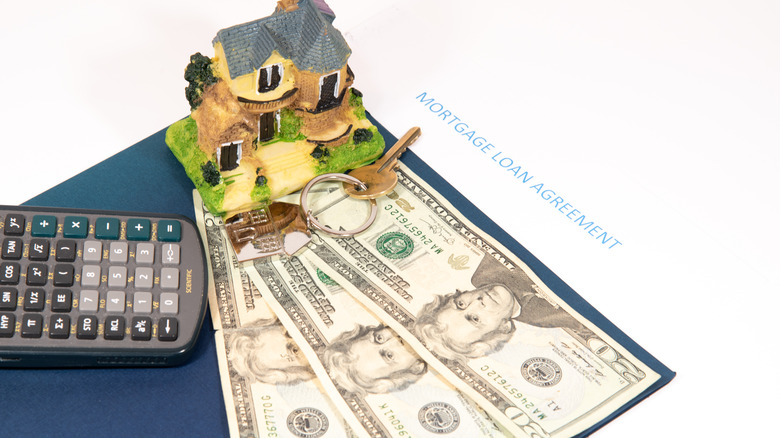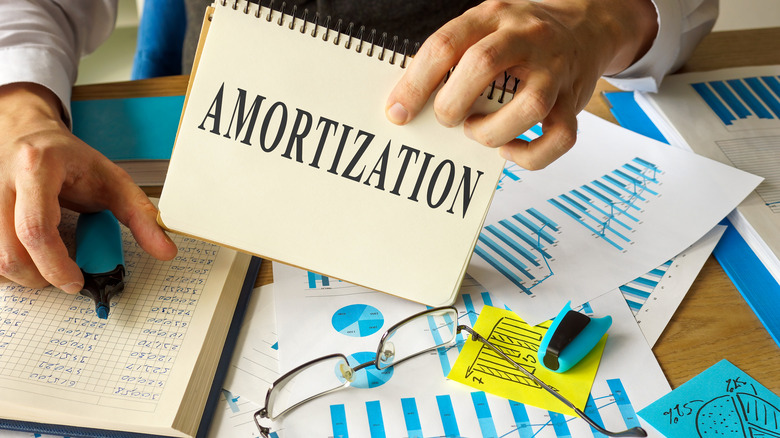What Is Amortization In Real Estate?
Amortization is a technique used to charge or lower the value of an asset to an expense over a specified period. A good example is settling a mortgage loan by consistently delivering set interest amounts and principal payments. Usually, interest payments are higher at first; however, they decline (over principal amounts) at the end of the loan repayment schedule. In doing so, your mortgage payments harmonize; hence, you don't have to pay different amounts every month.
According to Accounting Tools, the term is mostly used for the progressive decline of the cost of intangible assets with a set use period, reflecting the consumption of the asset. The amortization schedule illustrates the number of payments you make monthly towards repaying the loan's full term.
Ordinarily, lenders use amortization to file the history of your payments each month towards mortgage loan payments. So, if you want to buy a home, you need to know how well to manage your finances to ease the process of paying off a loan. Creditors help by making your monthly payments predictable so that you can know what you will be required to pay in the future.
Understanding amortization in real estate
As a homeowner, amortizing your loan can be highly beneficial in financing your house. You should note that amortization can affect the amount of loan the lender approves, which, in return, affects the size of your future home. Therefore, your ability to possess a larger and high-end property entirely depends on a good amortized mortgage. Since the first payment is lower than other subsequent payments throughout your loan term, you can easily acquire your dream house along these lines.
To break it down, the principal is the amount of loan the lender gives you, and interest is the payment you make to borrow the money. Rocket Mortgage further explains some key terms that are crucial in understanding this concept. For instance, a fully amortized loan ensues when you make the full scheduled payment by the end of your loan term.
On the other hand, negative amortization arises when one continues to make the stipulated timely payments, but their debt keeps rising since the minimum payment cannot cover the interest amount. Negatively amortized loans are considered risky for the borrower because the interest not paid goes back to the loan principal. Therefore, they have to make even bigger payments the following month. And finally, a positive amortization is when a borrower pays off a portion of the principal with each installment to reduce their loan balance.
Type of real estate mortgages
Your amortization schedule and term of the loan may not always align. Likewise, some real estate loans are not fully amortized. Rocket Mortgage describes four types of mortgages you can apply for in real estate.
First is a fixed-rate mortgage, which is the ideal loan type for you if you wish to stay in your home for some time or make it a permanent residence. At the start of the mortgage period, you pay more monthly interest, but as interest goes down, you start paying more of the principal. Fixed-rate loans offer a fixed interest rate all through the loan term. Although the value you pay may vary depending on your insurance rates and local tax, the loan still gives a predictable monthly payment.
Balloon loans include amounts paid all at once at the set time in the term. At the start, the mortgages can only be in interest payments but still include monthly interests and principal payments. Despite this, you must always be ready to make a lump sum payment, mostly at the end of the loan term.
Adjustable-rate mortgages (ARMs) have their borrowers pay a fixed interest rate in the first introductory period, often lower than the market rate, but later on, the lender looks at the index to determine an appropriate estimate. Lastly, with interest-only loans, you can make low payments of only monthly interests in the first period and pay the rest of the interest and principal later on.
How amortization works in real estate
The first thing you always need to do when dealing with real estate is to understand how loan amortization works. Knowing whether it's partially or fully amortizing will guide you to the right house at a price you can comfortably pay. According to MasterClass, amortization works in a few steps.
Firstly, you have to take a mortgage loan from a lender, which will include the total interest and principal fee. As a borrower, the lender expects you to completely repay the interest fee and principal over the life of the loan. The next step is to start the mortgage repayment process by paying off monthly installments. As mentioned earlier, a large sum will go towards payments of the interest, and later on, you will pay higher for the principal fee.
To completely pay off the mortgage without facing a negative amortization, you need to continue paying the loan to cover the interest amounts. In doing so, the total loan payment will lean more on the principal rather than interest. After a scheduled period of consistently paying the principal, you will have finished the loan repayment process. Also, to avoid going back to paying more interest than principal, you must avoid mortgage refinancing as it can lead to serious trouble.



